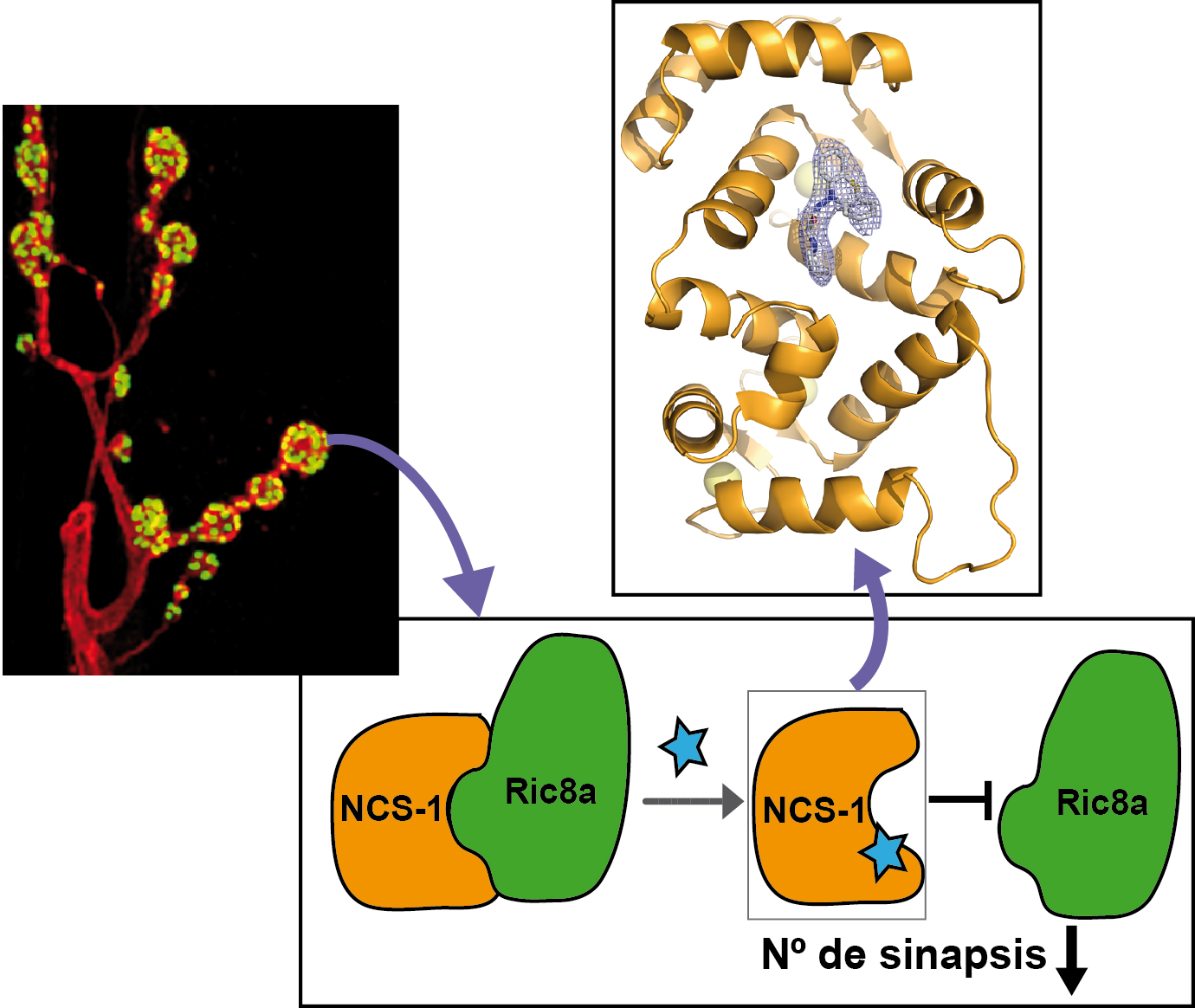
A new molecule with the ability to modify the number of synaptic contacts between neurons has been presented in a recent work published recently in the PNAS journal. This finding opens the door for the design of new drugs with potential action for the treatment of neurological diseases as autism or Alzheimer.
A multidisciplinary team formed by researchers from the Instituto de Química Física Rocasolano, Instituto Cajal and the group of Translational Medicinal and Biological Chemistry from Centro de Investigaciones Biológicas, has demonstrated that this small molecule is able to interfere in a protein-protein interaction (PPI) key for the regulation of synapsis and release of neurotransmitters which pass the information from a neuron on the next.
The aminophenothiazine was identify by virtual screening following the PPI inhibition hypothesis using the in-house library belonging to the CIB group. Human cell cultures and a Drosophila model for fragile X syndrome, a severe form of autism, have been employed to check the efficacy in the synapsis modulation.
Structural data obtained by X-Ray Crystallography has allowed to demonstrate the mechanism of action at atomic level and will help to the design of a new generation of drugs more efficient for the treatment of these pathologies.
More information:

